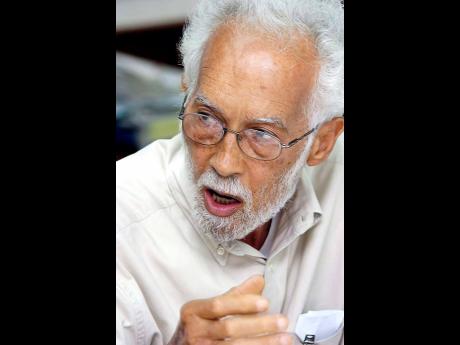Horace Levy | Lessons from Grenada
A panel discussion this week in Grenada, marking the 40th anniversary of that country’s four-and-a-half years of revolution, has turned up International Monetary Fund (IMF) and World Bank data that make for a very interesting comparison with Jamaica’s six years under the IMF. Grenada, like Jamaica, received high marks from the IMF and, in the face of fierce United States opposition, substantial loans.
For this brief overview – details can follow – three differences between the two countries should be highlighted:
1. Starting point, but continued: Belt-tightening in Jamaica’s case, while in Grenada, 1979-81, it was ‘basic needs’ satisfaction.
2. Other plan components: Substantial physical infrastructure is addressed in Jamaica all along, and there is much talk of growth. In Grenada, infrastructure and growth are assigned to the second (1982-86) and third (1986- ) phases.
3. Outcome: Jamaica now tries for growth by the Bank of Jamaica (BOJ) manipulating interest and inflation rates, while Grenada drew on the response to ‘basic needs’ treatment.
DETAILS OUTLINED
1. Preliminary note must be made of the fact that Grenada’s People’s Revolutionary Government (PRG) did not start with the huge debt that in 2013 hung over Jamaica. The latter was forced as a result – most would say – to limit spending severely. However, even with debt reduction, under the IMF, more than halfway its goal, belt-tightening has not eased. Jamaica’s mindset, like the IMF’s, is not on people’s needs.
‘Basic needs’ is the name of the category identified in the 1970s by governments and international agencies as a social starting-point responsibility. While its replacements, under World Bank/IMF influence, by concepts such as ‘growth’ and ‘prosperity’ are generic, basic needs are concrete.
By 1981, for example, 30 per cent of the poorest schoolchildren were receiving free books, meals and uniforms; primary-and secondary-school education was free for every child and, for those accepted, tertiary education also was free. Health and education were getting 35 per cent of total budget, 13 per cent of Grenadians, the lowest income, had received house repairs, and unemployment dropped from 49 to 14 per cent. By 1982, real wages were up seven per cent.
2-3. Jamaica, all along, laid out big plans and huge sums on physical infrastructure – ports and roads, which show great improvement – but next to nothing on human infrastructure, which has left huge problems in security, education and health. Growth also has proved elusive, with the manipulation of inflation and BOJ interest rates the latest from the IMF tool-kit for nailing it down.
Grenada’s prompt response to basic needs demand unleashed an amazing wave of people motivation. Whole communities came out to repair school buildings, community centres and roads, with the PRG supplying materials. Parents and skilled persons took over primary schools one day a week to enable untrained teachers to attend training. People turned out in droves to town-hall discussions on local government, water, electricity and other budget issues.
In sum, voluntary inputs contributed millions of dollars to human infrastructure as phase two, 1982-83, began. Even a few phase three growth seeds sprouted; for example, private-sector investment. More than a ‘trickle-up’, voluntarism produced a ‘storm surge’, infrastructure and growth becoming the people’s business.
Details on this and on respective state/private-sector roles and inputs, and on the PRG’s extraordinary success in getting IMF loans (the first in May 1981) on its own terms, will have to await another column.
Horace Levy is a human-rights advocate. Email feedback to columns@gleanerjm.com and halpeace.levy78@gmail.com.

